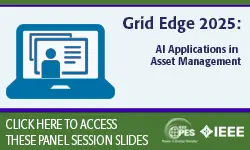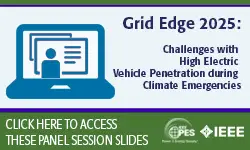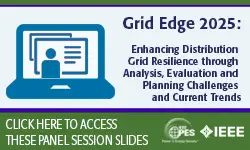-
Members: FreePES
IEEE Members: $45.00
Non-members: $70.00Pages/Slides: 81
The power grid is now more dynamic than ever before and newer tools are increasingly developed to
manage the grid better. Renewable energy sources are changing power system characteristics at a time
when utilities are also focusing on improving customer service and resiliency of the grid, by using
advanced monitoring and control technologies. Synchrophasor technologies are being rapidly deployed to
provide high-speed, high-resolution measurements from phasor measurement units (PMUs) across the
transmission systems as a tool for monitoring and post fault analysis which may lead to real-time control
using PMU data in near future. In addition, communication technologies are advancing and related
international standards are maturing to be deployed in substation environment. Renewed attention is
required on protection and control strategies that build upon the available and emerging technologies
backed by a cost analysis that can be used to support a long-term value proposition. To explore improved
utilization of present technologies and chart the development of the next generation Protection and
Control (P&C) technologies, the IEEE Power System Relaying Committee has formed a working group
to prepare a report describing and analyzing the state-of-the-art technologies for centralized protection
and control (CPC) within a substation.
This report starts by reviewing the advancements in substation protection and control technology. Next
the report describes CPC and reviews its history. Then the report reviews some of the existing
technologies that can support CPC. Following this discussion is a review of some emerging technologies
supporting high-speed communication with high degree of reliability. The report then proposes possible
CPC architectures using existing standardized communication technologies, and provides an example of
such a system with a typical substation configuration. The report then discusses reliability and cost
analysis for these CPC architectures; addresses testing and maintenance aspects and discusses advanced
applications that are either not possible or difficult to implement without CPC.
The report reviews a pilot project demonstrating that existing technologies are mature enough to support
CPC. The report then discusses some of the emerging and future applications for protection and control
which will require a paradigm shift in the way we approach the engineering, operation and maintenance
of the power system protection and control. Some of these applications can only be applied with a CPC
approach while others will significantly benefit in having the high-performance computing platform at the
substation which centralizes protection and control.
Finally the report concludes that CPC technology, when appropriately applied, significantly improves the
reliability of protection and control systems and the power grid at an affordable cost - with enhanced
applications capability and maintainability for both hardware replacement and software upgrade.


